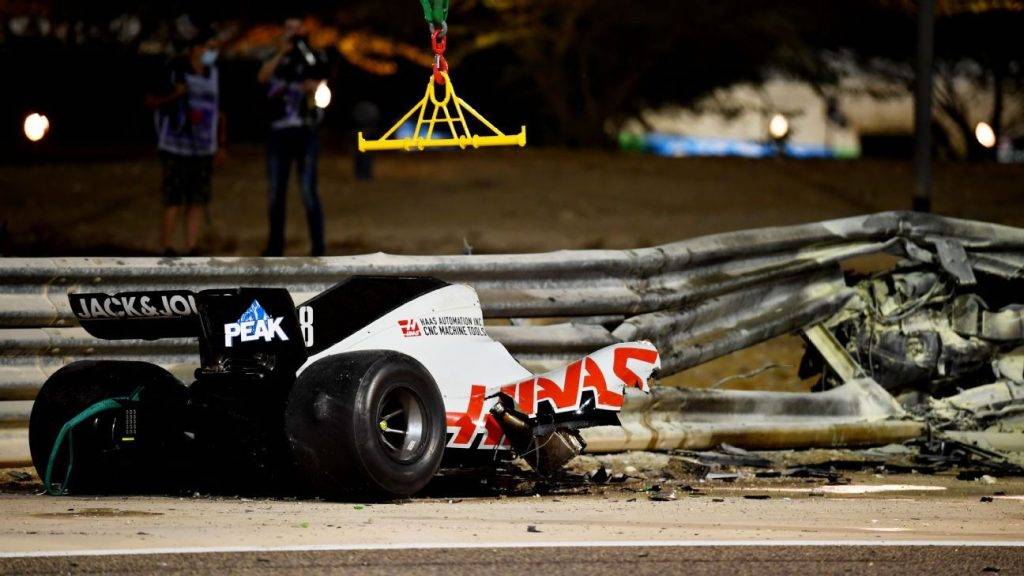Five Years Since Grosjean’s Miraculous Escape from Fiery Bahrain Crash
It has been five years since Romain Grosjean’s terrifying crash at the 2020 Bahrain Grand Prix, a moment that sent shockwaves through the world of Formula 1. The French driver survived an inferno after being trapped in his burning car for an agonising 27 seconds, suffering only minor injuries. His remarkable escape highlighted the life-saving advancements in motorsport safety technology, which played a critical role in the outcome of this harrowing episode.
Five Years Since Bahrain 2020: Tech That Saved Grosjean’s Life
Romain Grosjean’s fiery crash at the Bahrain Grand Prix five years ago remains one of the most shocking incidents in Formula 1’s history. The images of Grosjean emerging from the flames are etched into the memories of fans and stakeholders alike, underscoring the effectiveness of safety innovations that have been instrumental in preserving drivers’ lives.
The Crash: A Near-Death Experience
On the very first lap, Grosjean collided with Daniil Kvyat, sending his car crashing head-first into the barriers at a speed of 192 km/h (119 mph). The impact was catastrophic, ripping the vehicle in two and igniting a fireball. The FIA later calculated that Grosjean experienced a peak force of 67 Gs—a staggering number that showcases the severity of the crash. To most onlookers, his survival against those odds seemed impossible.
The Role of Advanced Safety Features
The swift response of the F1 medical team was crucial in ensuring Grosjean’s survival. Dr. Ian Roberts, who arrived on the scene within seconds, helped him escape the flaming wreckage. However, it was the advancements in safety technology that provided Grosjean the chance to walk away from such a horrific situation.
The Monocoque: A Driver’s Lifeline
One of the most significant innovations is the carbon-fiber survival cell, or monocoque, which has been a cornerstone of F1 safety since the early 1980s. This structure is designed to withstand immense forces during crashes, and in Grosjean’s case, it held firm through the devastating impact. Without the monocoque, his body would have borne the full brunt of the collision.
The HANS Device: A Neck Saver
Another critical safety feature is the Head and Neck Support (HANS) device, which Grosjean was wearing at the time of the crash. The HANS device reduces the risk of neck injuries during high-impact crashes by limiting the head’s movement. Grosjean’s protective measures were instrumental in preventing life-threatening injuries when his car met the barriers.
Halo Device: From Skepticism to Praise
The Halo cockpit protection device has proven its value since its introduction in 2018. Originally met with skepticism—including criticism from Grosjean himself—the device prevented his head from making contact with the barrier during the crash. In a poignant statement from his hospital bed, Grosjean famously said, “I wasn’t for the Halo some years ago, but I think it’s the greatest thing that we’ve brought to Formula 1, and without it I wouldn’t be able to speak with you today.”
Fire Resistance: Holding Up Under Pressure
A vital aspect of Grosjean’s survival was his racing suit, made from flame-resistant Nomex material. Designed to withstand extreme temperatures, his suit provided a critical line of defense. Although the fire reached temperatures of up to 1,000 degrees Celsius, Grosjean endured 27 seconds in the flames with only minor burns to his hands.
The Crucial Role of Medical Response
Formula 1’s proactive measures include the deployment of a medical car, which ensures rapid medical assistance at the scene of an accident. Thanks to this system, Dr. Roberts arrived at Grosjean’s wreckage swiftly, allowing for immediate care, which proved vital in the delirium of the moment.
Conclusion: A Turning Point for Safety in Motorsport
Romain Grosjean’s miraculous escape from the Bahrain Grand Prix not only underscores the importance of safety technology in motorsport but also serves as a poignant reminder of the risks drivers face. As the industry reflects on this incident five years later, it galvanizes efforts to continue innovating in the realm of driver safety, ensuring that the horrors of the past might never be repeated.


